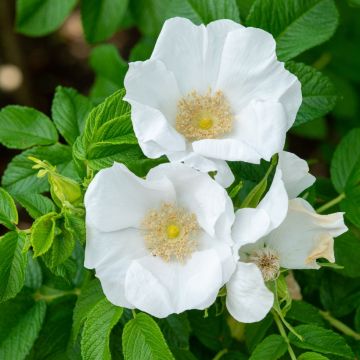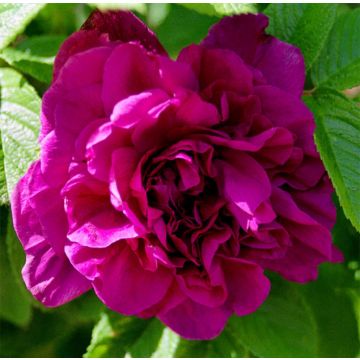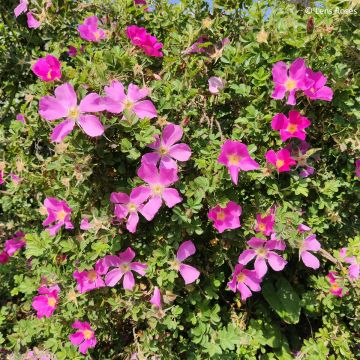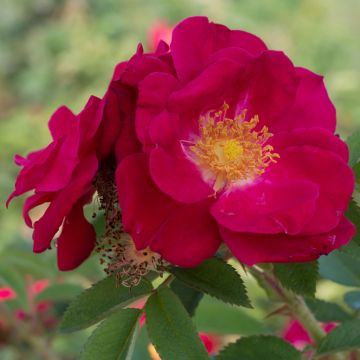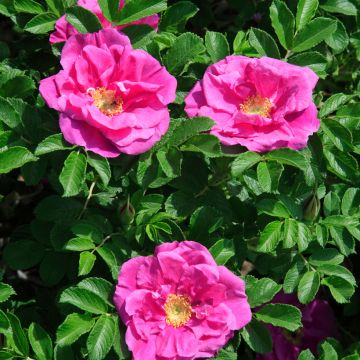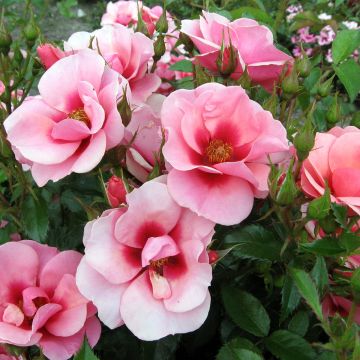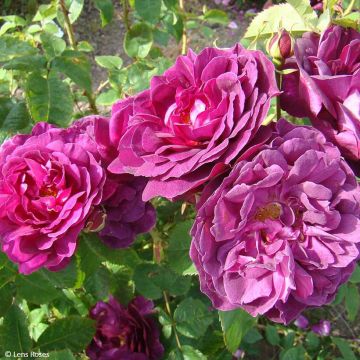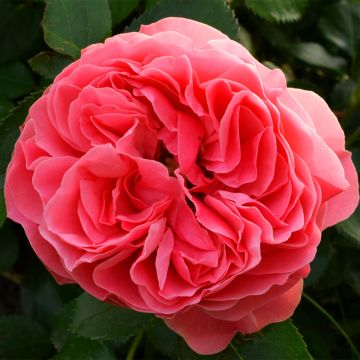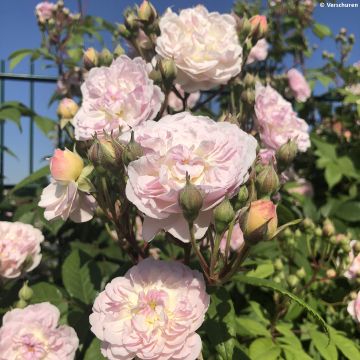Shipping country and language
Your country of residence may be:
Your country of residence is:
For a better user experience on our website, you can select:
Your shipping country:
Andorra
Austria
Belgium
Bulgaria
Canada
Chile
Croatia
Cyprus
Czechia
Denmark
Estonia
Finland
France
Germany
Greece
Hungary
Iceland
Ireland
Italy
Latvia
Lithuania
Luxembourg
Malta
Monaco
Netherlands
Poland
Portugal
Romania
Slovakia
Slovenia
Spain
Sweden
Switzerland
United Kingdom
We only deliver seed and bulb products to your country. If you add other products to your basket, they cannot be shipped.
Language:
French
German
Spanish
English
My Account
Hello
My wish lists
Plantfit
Log in / Register
Existing customer?
New customer?
Create an account to track your orders, access our customer service and, if you wish, make the most of our upcoming offers.
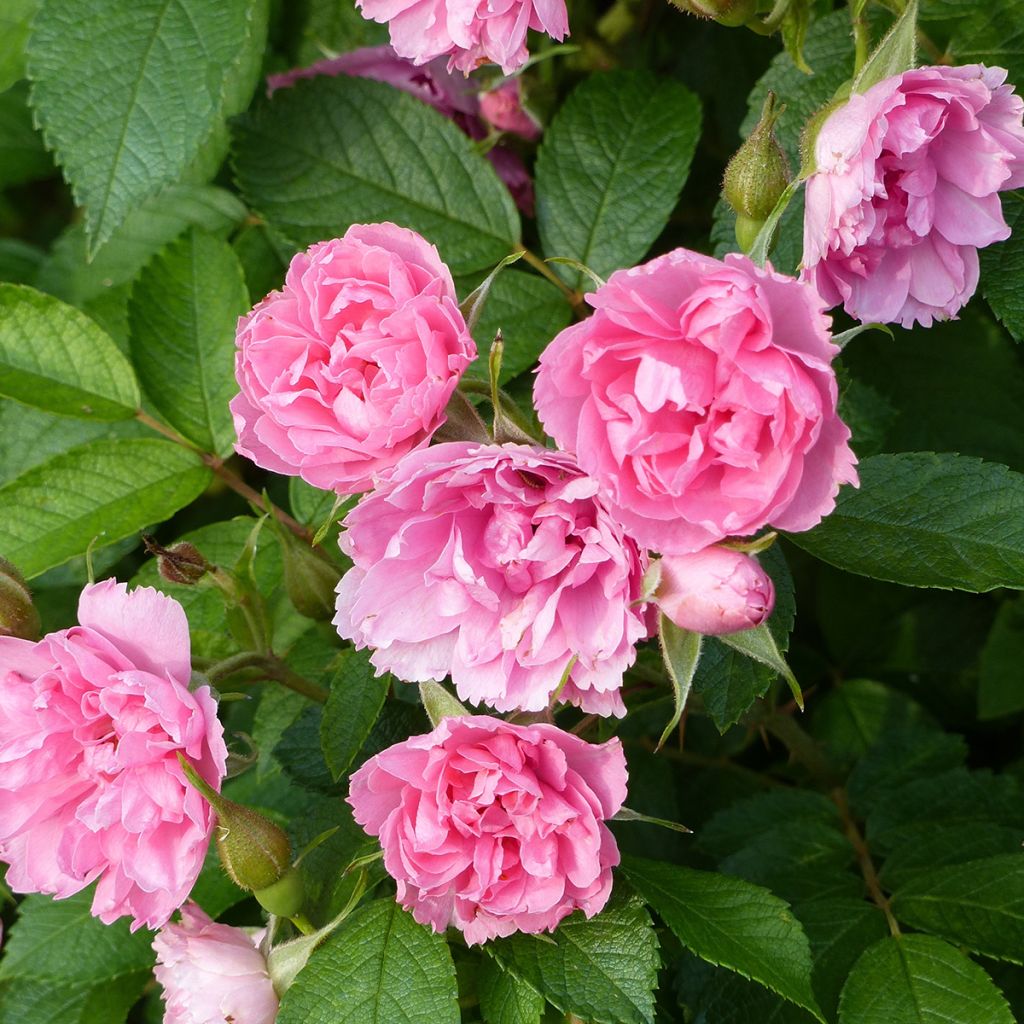

Rosa rugosa Pink Grootendorst
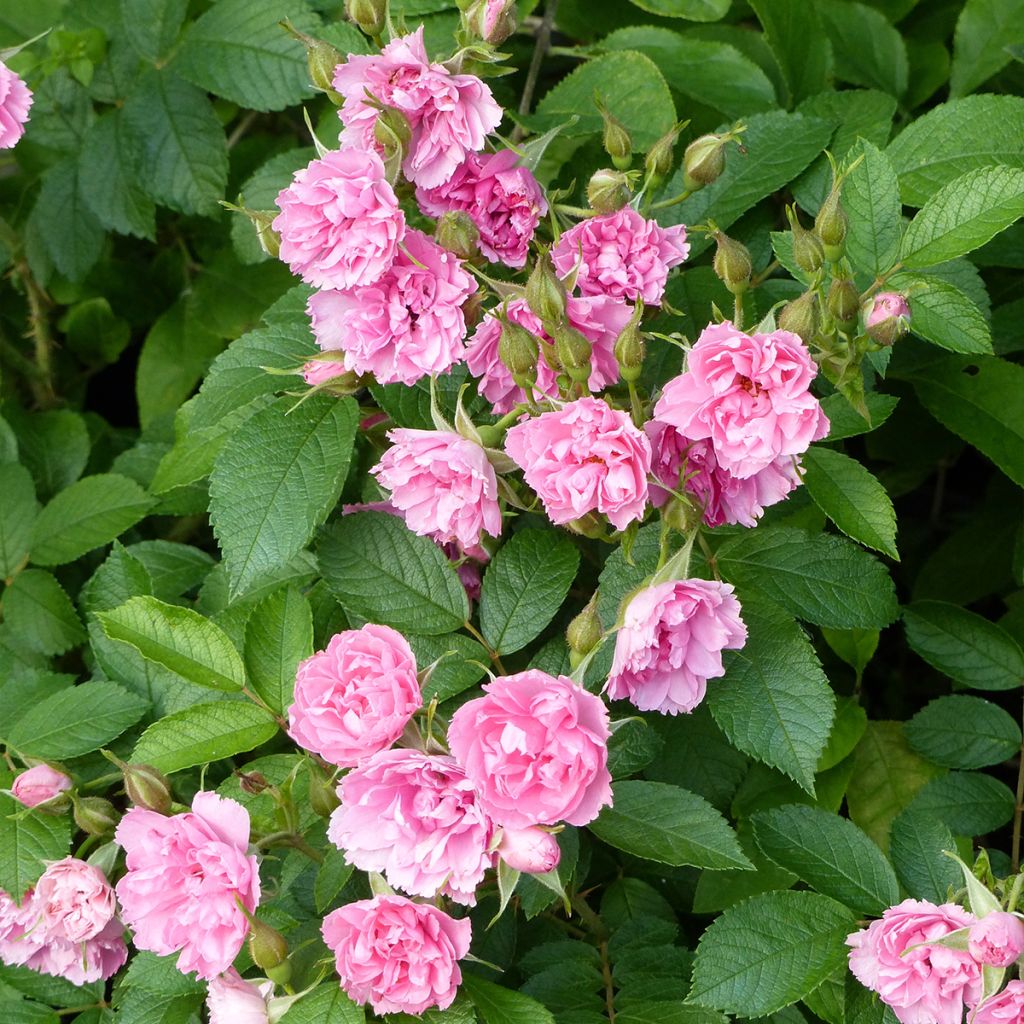

Rosa rugosa Pink Grootendorst
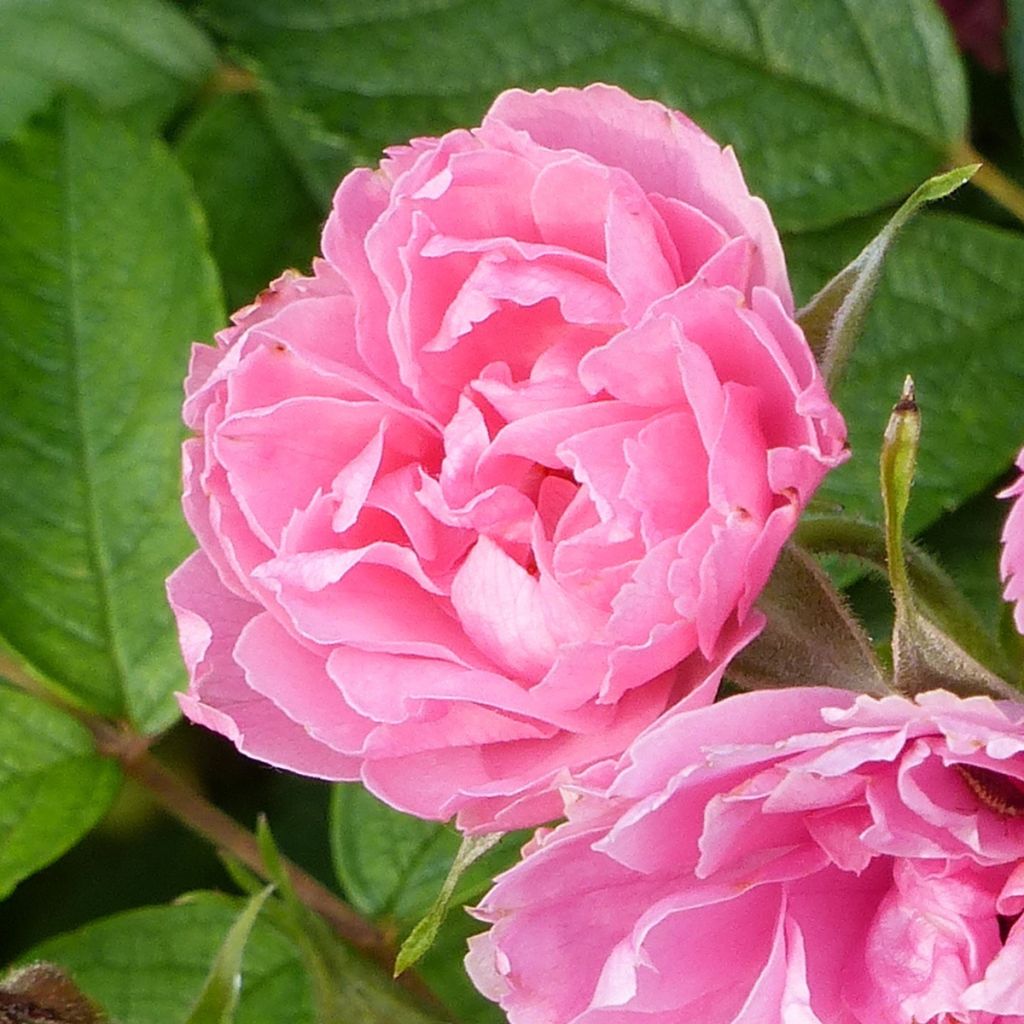

Rosa rugosa Pink Grootendorst
View more pictures
Hide images

Thierry P.

Floraison de septembre - image 1
Thierry P. • 84 FR

Thierry P.

Floraison de mai - image 5 - En compagnie du rosier grimpant "Blush Noisette".
Thierry P. • 84 FR
Rosa rugosa Pink Grootendorst
Rosa x rugosa Pink Grootendorst
Rugosa Rose, Japanese Rose
Rose received in good condition. Put in a temporary planting bed, awaiting final planting in October next year. Looking forward to seeing it bloom.
Fabienne, 21/09/2021
Order in the next for dispatch today!
Dispatch by letter from 3,90 €.
Delivery charge from 5,90 € Oversize package delivery charge from 6,90 €.
More information
This item is not available in your country.
Shipping country:
Andorra
Austria
Belgium
Bulgaria
Canada
Chile
Croatia
Cyprus
Czechia
Denmark
Estonia
Finland
France
Germany
Greece
Hungary
Iceland
Ireland
Italy
Latvia
Lithuania
Luxembourg
Malta
Monaco
Netherlands
Poland
Portugal
Romania
Slovakia
Slovenia
Spain
Sweden
Switzerland
United Kingdom
Schedule delivery date,
and select date in basket
This plant carries a 24 months recovery warranty
More information
We guarantee the quality of our plants for a full growing cycle, and will replace at our expense any plant that fails to recover under normal climatic and planting conditions.
From 5,90 € for pickup delivery and 6,90 € for home delivery
Express home delivery from 8,90 €.
From 5,90 € for pickup delivery and 6,90 € for home delivery
Express home delivery from 8,90 €.
Would this plant suit my garden?
Set up your Plantfit profile →
Description
The 'Pink Grootendorst' Rose is a strong horticultural hybrid resulting from the rugosa rose and the polyantha rose. And as "good blood cannot lie", it is a truly problem-free, very floriferous, perpetual, never sick plant. It develops into a vigorous and bushy shrub, which bears small bright pink to antique pink roses, double, with fringed petals, which make them resemble carnations. They are gathered in bouquets that adorn a beautiful light to medium green waffled foliage throughout the beautiful season. The plant is very easy to grow, very hardy, and tolerates sea spray and poor soils well.
A magnificent horticultural success, the 'Pink Grootendorst' Rose was born in Holland in 1923, from the hands of Grootendorst. It is derived, among others, from the Rosa rugosa 'Rubra', the Japanese Rose native to the Far East, inhabiting coasts and sandy dunes, with remarkable hardiness.
The 'Pink Grootendorst' rose quickly develops into a dense bush, which can reach 1.20m (3ft 11in) to 1.50m (4ft 11in), sometimes more, in height and 1m (3ft 4in) to 1.20m (3ft 11in) in spread. Its stems, straight and highly branched, are brown and covered in prickles. They bear roses grouped in clusters, 3 to 4cm (1.6in) in diameter, double, curiously fringed, in June-July and then in late summer. The buds, very pointed, gradually open into flowers displaying various shades of pink, sometimes pale and warm or a vintage pink. They are not fragrant and do not produce hips. The deciduous foliage, abundant down to the base of the plant, is composed of waffled leaves, cut into fairly light, shiny leaflets. And in October, as the flowering ends, the branches become beige and the leaves turn a beautiful golden yellow. All rugosa roses tend to sucker.
The passion for old roses is both widespread and well justified: these roses are not only the parents of our modern roses, but also and always the glory of our gardens. Rosa rugosa 'Pink Grootendorst' is a vigorous and well-armed rose, ideal in a landscape or defensive hedge, as the balance between foliage and flowers is perfect and it forms a thorny mass that is difficult to cross. It can be associated with its white and red siblings, the varieties 'F.J Grootendorst' and 'White Grootendorst', but also with Cotinus, lilac, mock orange, buddleias, or even with viburnums, shrubs with a rustic character and just as easy to grow. Finally, it is an excellent seaside shrub, to be planted in the front line, but in a soil that remains somewhat moist.
Rosa rugosa Pink Grootendorst in pictures
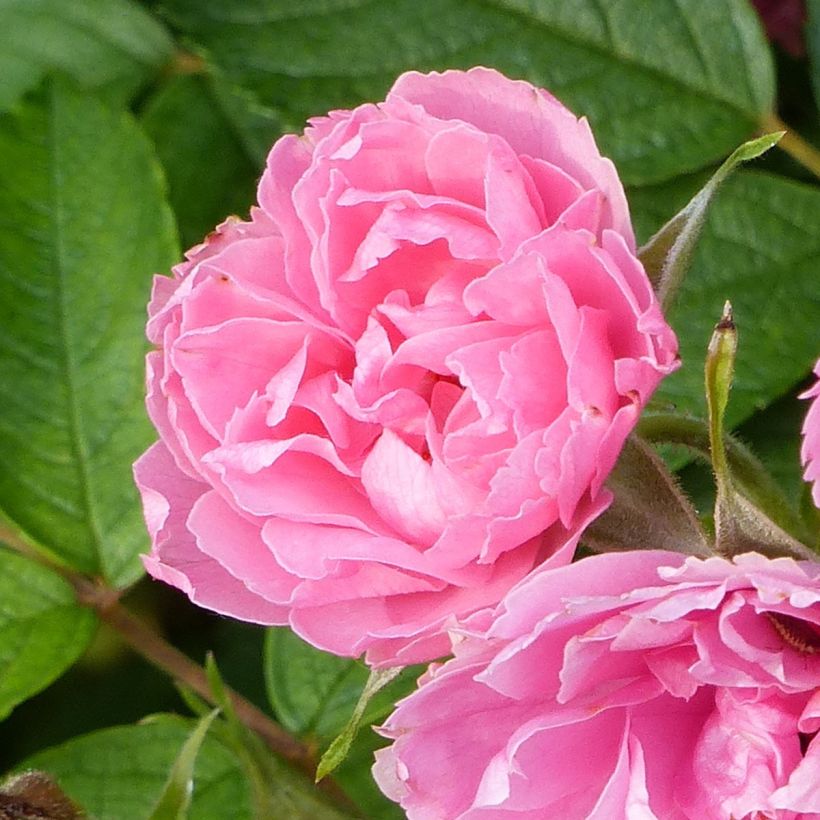

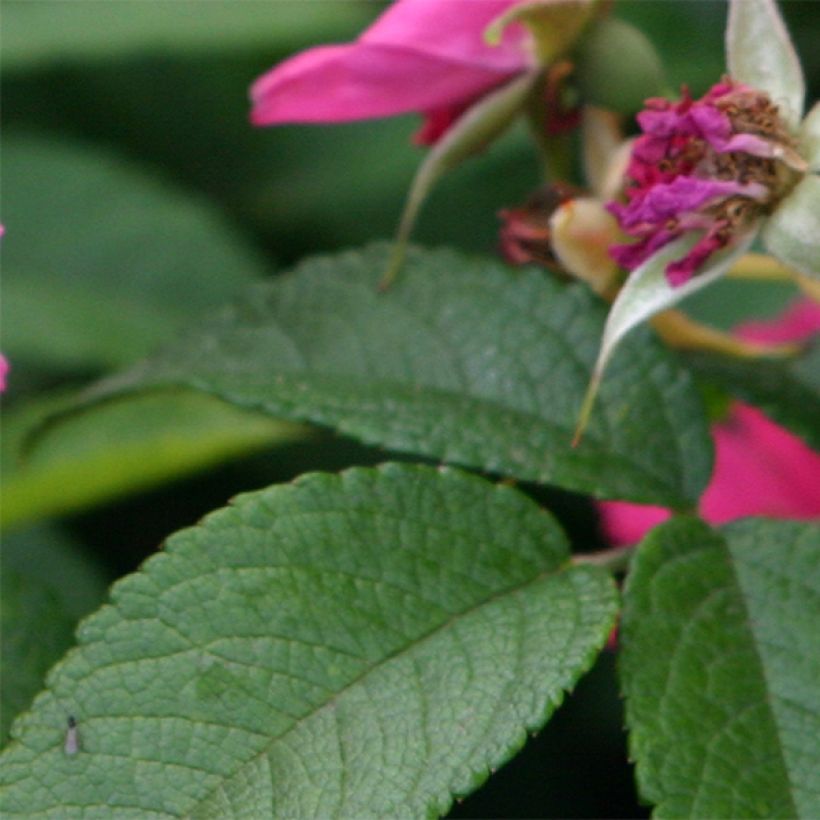

Plant habit
Flowering
Foliage
Botanical data
Rosa
x rugosa
Pink Grootendorst
Rosaceae
Rugosa Rose, Japanese Rose
Cultivar or hybrid
Rosa canina Laxa (Wrapped bare root, 4L/5L pot)
Other Rosa rugosa
Planting and care
The 'Pink Grootendorst' rose is undemanding, it thrives in all regions that are not too hot, is not susceptible to diseases, cold, rain, or poor and occasionally dry soils. It adapts to any type of soil, even sandy, as long as the planting is well cared for! Plant it in well-worked and well-drained ordinary soil, in a sunny or semi-shady position that it tolerates very well. To maintain a well-bushy habit, maintenance is simple: after winter, remove the oldest branches (2-3 years old). Very hardy, this rose withstands -20°C (-4°F). It may be useful to remove dead wood in winter and to remove faded flowers. If necessary, in spring, after the risk of frost, a light pruning can be done. This variety sometimes tends to sucker, which further enhances its appearance.
To plant your rose, in a pot or in open ground, work the soil to a depth of 25cm (9.8in) by crumbling it and placing a base amendment such as dried blood or dehydrated horn at the bottom of the planting hole. Position your plant, removed from its pot, by covering the top of the root ball with 3cm (1.2in) of soil, backfill and water generously to remove air pockets. In dry weather, it is necessary to water regularly for a few weeks to facilitate rooting. Also remember to provide your rose with special rose fertilizer that stimulates plant flowering. To achieve abundant flowering of your roses, regularly bend and tie the branches. Each bending produces a lateral shoot that ends in a bouquet of flowers. Do not hesitate to use this technique, you will be rewarded. Regularly remove faded flowers.
Roses are often stained or unsightly at the end of summer, but this is not a problem for their development. These spots are not harmful to the rose, it is a natural phenomenon.
Planting period
Intended location
Care
- , onOrder confirmed
Reply from on Promesse de fleurs
Roses by purpose
Haven't found what you were looking for?
Hardiness is the lowest winter temperature a plant can endure without suffering serious damage or even dying. However, hardiness is affected by location (a sheltered area, such as a patio), protection (winter cover) and soil type (hardiness is improved by well-drained soil).

Photo Sharing Terms & Conditions
In order to encourage gardeners to interact and share their experiences, Promesse de fleurs offers various media enabling content to be uploaded onto its Site - in particular via the ‘Photo sharing’ module.
The User agrees to refrain from:
- Posting any content that is illegal, prejudicial, insulting, racist, inciteful to hatred, revisionist, contrary to public decency, that infringes on privacy or on the privacy rights of third parties, in particular the publicity rights of persons and goods, intellectual property rights, or the right to privacy.
- Submitting content on behalf of a third party;
- Impersonate the identity of a third party and/or publish any personal information about a third party;
In general, the User undertakes to refrain from any unethical behaviour.
All Content (in particular text, comments, files, images, photos, videos, creative works, etc.), which may be subject to property or intellectual property rights, image or other private rights, shall remain the property of the User, subject to the limited rights granted by the terms of the licence granted by Promesse de fleurs as stated below. Users are at liberty to publish or not to publish such Content on the Site, notably via the ‘Photo Sharing’ facility, and accept that this Content shall be made public and freely accessible, notably on the Internet.
Users further acknowledge, undertake to have ,and guarantee that they hold all necessary rights and permissions to publish such material on the Site, in particular with regard to the legislation in force pertaining to any privacy, property, intellectual property, image, or contractual rights, or rights of any other nature. By publishing such Content on the Site, Users acknowledge accepting full liability as publishers of the Content within the meaning of the law, and grant Promesse de fleurs, free of charge, an inclusive, worldwide licence for the said Content for the entire duration of its publication, including all reproduction, representation, up/downloading, displaying, performing, transmission, and storage rights.
Users also grant permission for their name to be linked to the Content and accept that this link may not always be made available.
By engaging in posting material, Users consent to their Content becoming automatically accessible on the Internet, in particular on other sites and/or blogs and/or web pages of the Promesse de fleurs site, including in particular social pages and the Promesse de fleurs catalogue.
Users may secure the removal of entrusted content free of charge by issuing a simple request via our contact form.
The flowering period indicated on our website applies to countries and regions located in USDA zone 8 (France, the United Kingdom, Ireland, the Netherlands, etc.)
It will vary according to where you live:
- In zones 9 to 10 (Italy, Spain, Greece, etc.), flowering will occur about 2 to 4 weeks earlier.
- In zones 6 to 7 (Germany, Poland, Slovenia, and lower mountainous regions), flowering will be delayed by 2 to 3 weeks.
- In zone 5 (Central Europe, Scandinavia), blooming will be delayed by 3 to 5 weeks.
In temperate climates, pruning of spring-flowering shrubs (forsythia, spireas, etc.) should be done just after flowering.
Pruning of summer-flowering shrubs (Indian Lilac, Perovskia, etc.) can be done in winter or spring.
In cold regions as well as with frost-sensitive plants, avoid pruning too early when severe frosts may still occur.
The planting period indicated on our website applies to countries and regions located in USDA zone 8 (France, United Kingdom, Ireland, Netherlands).
It will vary according to where you live:
- In Mediterranean zones (Marseille, Madrid, Milan, etc.), autumn and winter are the best planting periods.
- In continental zones (Strasbourg, Munich, Vienna, etc.), delay planting by 2 to 3 weeks in spring and bring it forward by 2 to 4 weeks in autumn.
- In mountainous regions (the Alps, Pyrenees, Carpathians, etc.), it is best to plant in late spring (May-June) or late summer (August-September).
The harvesting period indicated on our website applies to countries and regions in USDA zone 8 (France, England, Ireland, the Netherlands).
In colder areas (Scandinavia, Poland, Austria...) fruit and vegetable harvests are likely to be delayed by 3-4 weeks.
In warmer areas (Italy, Spain, Greece, etc.), harvesting will probably take place earlier, depending on weather conditions.
The sowing periods indicated on our website apply to countries and regions within USDA Zone 8 (France, UK, Ireland, Netherlands).
In colder areas (Scandinavia, Poland, Austria...), delay any outdoor sowing by 3-4 weeks, or sow under glass.
In warmer climes (Italy, Spain, Greece, etc.), bring outdoor sowing forward by a few weeks.


